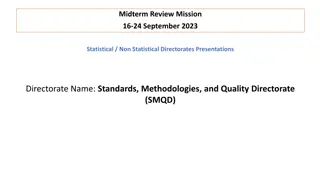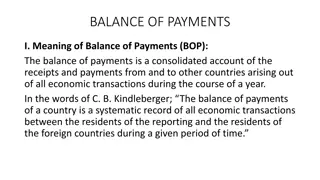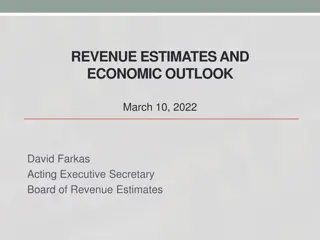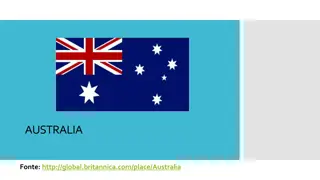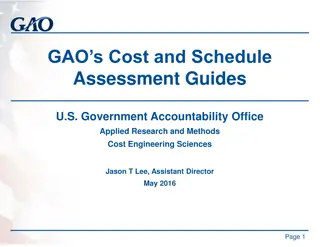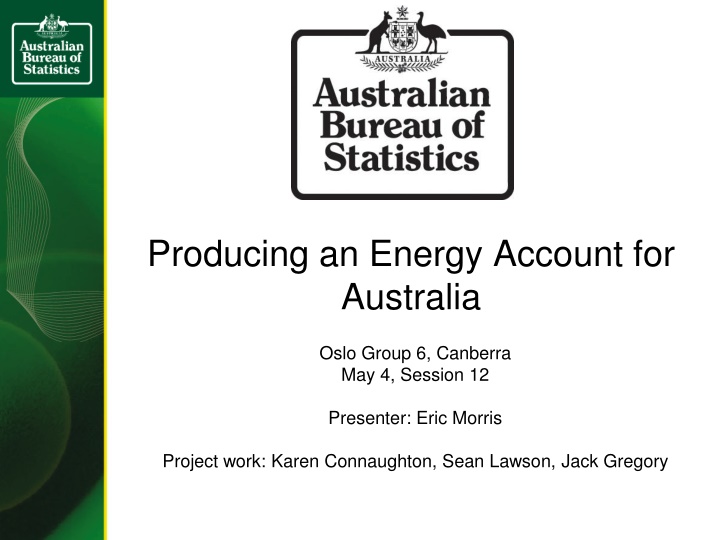
Energy Account for Australia - Statistical Estimates and Methodologies
The presentation focuses on compiling an Energy Account for Australia, utilizing sources for statistical estimates and methodological frameworks. It includes direct sources for statistical estimates and methodologies such as physical supply and use data, IGVA data, EWES, SMVU, and more. The significance of pricing in the energy sector, challenges in information transparency, and examples of hybrid energy use tables are also discussed.
Download Presentation

Please find below an Image/Link to download the presentation.
The content on the website is provided AS IS for your information and personal use only. It may not be sold, licensed, or shared on other websites without obtaining consent from the author. If you encounter any issues during the download, it is possible that the publisher has removed the file from their server.
You are allowed to download the files provided on this website for personal or commercial use, subject to the condition that they are used lawfully. All files are the property of their respective owners.
The content on the website is provided AS IS for your information and personal use only. It may not be sold, licensed, or shared on other websites without obtaining consent from the author.
E N D
Presentation Transcript
Producing an Energy Account for Australia Oslo Group 6, Canberra May 4, Session 12 Presenter: Eric Morris Project work: Karen Connaughton, Sean Lawson, Jack Gregory
Sources used in compiling the account Those used directly for statistical estimates eg. Physical supply and use data, IGVA data Those used to build methodologies eg. Pricing methodology and re-allocation from energy balance
Sources directly used for statistical estimates Non-ABS ABARES Australian Energy Statistics Physical supply and use ABS sources Australian System of Nat l Accounts (ASNA) 5204.0 IGVA
Sources used to build methodologies Energy, Water and Environment Management Survey (EWES) 4660.0 Survey of Motor Vehicle Use (SMVU) 9208.0
Reallocation of transport fuels to ownership basis Government portion of transport fuels Survey of Motor Vehicle Usage Survey data Government Finance Statistics Energy, Water and Environment Management Survey data Energy Use in Government Operations (DCCEE) ABARE-BRS Energy In Australia Table A - ANZSIC 93 Gross Supply and Use tables - ANZSIC 06 First draft Final Gross Supply and Use tables - ANZSIC 06 Energy, Water and Environment Management Survey data National Accounts - Industry Gross Value Added Conversion from gross supply and use to net energy consumption by industry Energy Intensity measures Reallocation methodology from ANZSIC 93 to ANZSIC 06 ABARE-BRS Energy in Australia Table F Split of Commercial and Services
Importance of pricing Energy a scarce and in demand resource Increasingly politically contentious issue Gaps and lack of transparency in available information
Hybrid Energy Use Table example template Natural Gas Petroleum Products PJ - - - - - - - - - - - Coal Uranium Electricity PJ $m PJ $m - - - - - - - - - - - - - - - - - - - - - - $m - - - - - - - - - - - PJ - - - - - - - - - - - $m - - - - - - - - - - - PJ - - - - - - - - - - - $m - - - - - - - - - - - - - - - - - - - - - - - - - - - - - - - - - Agriculture, Forestry & Fishing Mining Manufacturing Electricity, Gas, Water & Waste Construction Transport Wholesale & Retail Trade Accommodation Communication Other Commercial and Services Total Industry - - - - - - - - - - Residential - - - - - - - - - - Inventory Changes - - - - - - - - - - Total Domestic - - - - - - - - - - Exports - - - - - - - - - - Total
Previous method Quantity from ABARES energy balances Expenditure from ABS IO tables Expenditure/Quantity = implicit price Results experimental hybrid table for 2004-05, Energy Account 2007 (4604.0)
Our current attempt Standard business survey supplement Energy Water Environment Survey (EWES) Obtained volume and expenditure Expenditure/Quantity = implicit price Gaps filled from other sources or via previous methodology
Advantages Robust real-world observations Directly observed Entire economy (almost) All data from same source Prices differentiated by industry
Limitations No margins or other price components observed Reporting burden Response quality
Implicit electricity prices in survey data (Volume vs Expenditure, log scale)
Treatment of own use Some fuels consumed outside the market, especially by large companies Valuations based on prices from observed purchases, then applied to all consumption
What is a price? Many possible things Volatility Contract prices Is there an actual market?
Questions/ Discussion points Other countries experiences? Non-market energy Use of survey vehicles What assumptions are made and are they appropriate?





